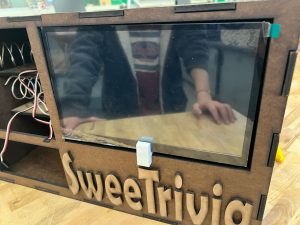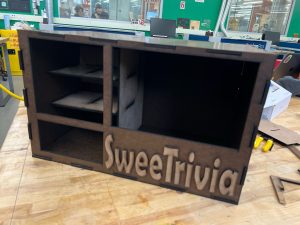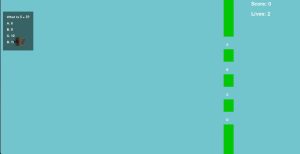- What are the most significant risks that could jeopardize the success of the project? How are these risks being managed? What contingency plans are ready? (by Vicky)
Our project is at the final stage of integration. Currently the box is fully assembled (all panels glued except for the front panel for emergency debugging/refill) and the standard mode game logic and dispense is fully tested. The post-mvp features (shopping mechanism at candy selection, QR code) are still being added. The most significant risk now is that our code base does not have the updated challenge mode logic:
a. Each correct answer is now worth 10 points while it should be worth 15.
b. The questions in challenge mode now are not being pulled from the database but instead using same questions for each round.
c. When bird hit the ground the error message is ‘incorrect answer’ instead of ‘hit ground!’.
d. The score does not start from zero in an entire new round. (Started after a dispense round).
A teammate has been working on these features, if our code base is not updated in time, our contigency plan is that Vicky and Min Ji will write the code to fix these issues. - Were any changes made to the existing design of the system (requirements, block diagram, system spec, etc)? Why was this change necessary, what costs does the change incur, and how will these costs be mitigated going forward? (by Fei) We made some modification on the height of the candy slot back panel. It didn’t take us much time to reprint it, as we had learned how to use the more advanced laser cutter in TechSpark. However, the change wasn’t particularly helpful, as we later learned from our ME friend that the coil needs to touch the ground to better support the weight of the candy. Our original plan was to use a taller panel to place the motor higher, but because of this requirement, the idea didn’t work out well.
- Provide an updated schedule if changes have occurred. This is also the place to put some photos of your progress or to brag about a component you got working. (by Min Ji)
No big schedule changes. Will plan to finish the following:
- final poster
- final video
- prep for the final demo
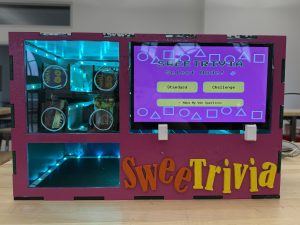
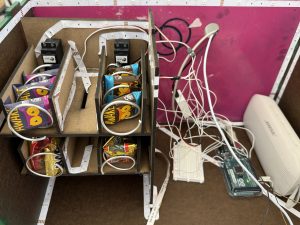
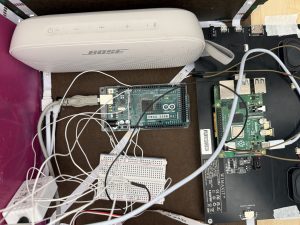
- List all unit tests and overall system test carried out for experimentation of the system.List any findings and design changes made from your analysis of test results and other data obtained from the experimentation.
– Design changes: we purchased a different coil (for 25 dollars ouch) that is harder and stiffer which should work in our favor, but the coil is ready-made and the size does not match the box’s internal dimensions. We then seeked help making some mechanical analysis and lowered the position of the coils so that the weight of the items are sitting on the shelf panels not the coils. This fixed the coils being bent out of shape during rotation and make the dispense smoother and more sustainable.
– Overall system test: made 3 dispense test (full dispense from full to empty) on all 4 candy slots to make sure every motor and coil are working properly.
– Tested the synchronization of audio and sound effects. works great, no overlapping/discontinue issue.

